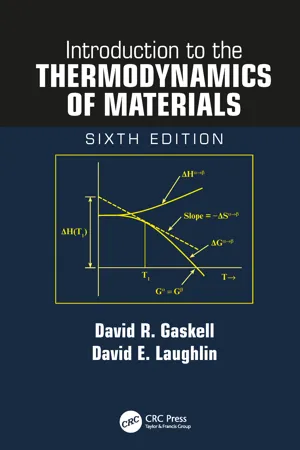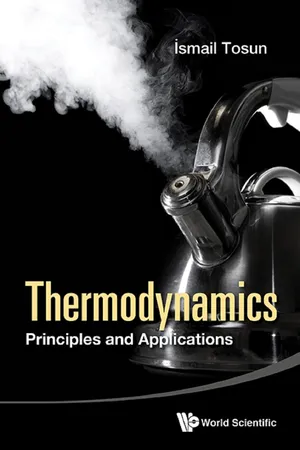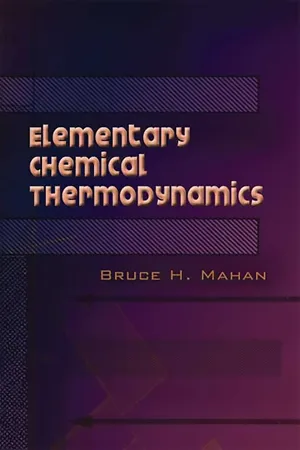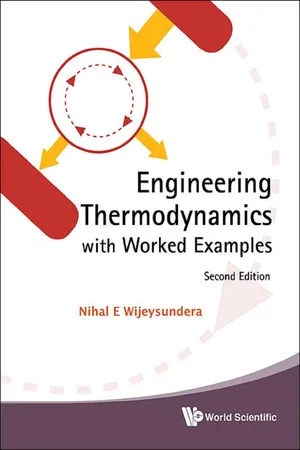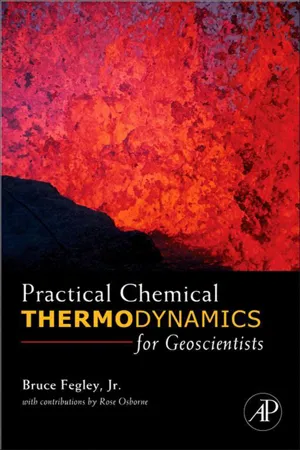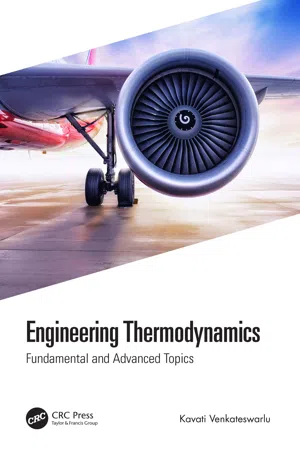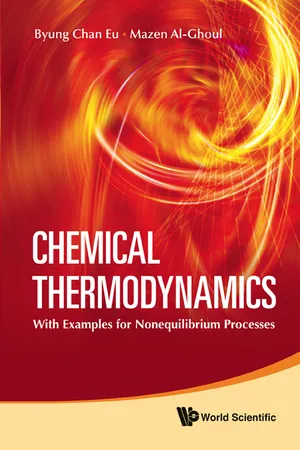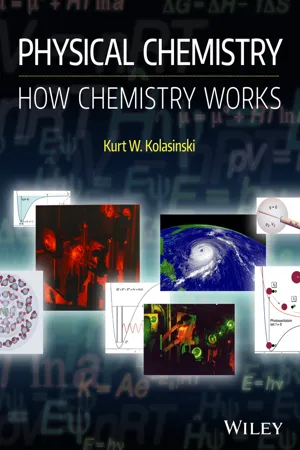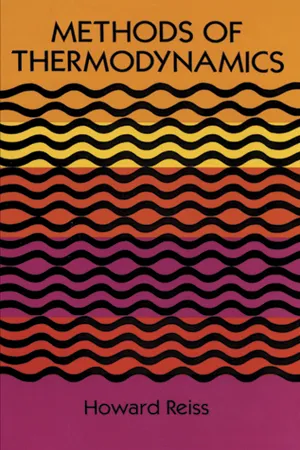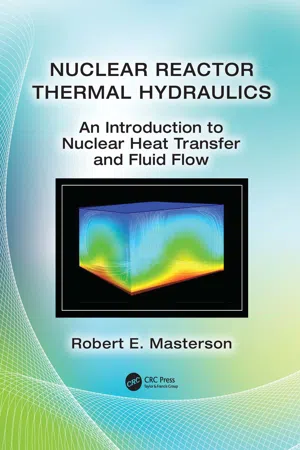Physics
First Law of Thermodynamics
The First Law of Thermodynamics states that energy cannot be created or destroyed, only transformed from one form to another. It is a fundamental principle in physics that governs the conservation of energy within a system. This law is often expressed as the principle of conservation of energy and has wide-ranging applications in various fields of science and engineering.
Written by Perlego with AI-assistance
Related key terms
Related key terms
1 of 4
Related key terms
1 of 3
11 Key excerpts on "First Law of Thermodynamics"
- eBook - ePub
Physics of Cryogenics
An Ultralow Temperature Phenomenon
- Bahman Zohuri(Author)
- 2017(Publication Date)
- Elsevier(Publisher)
Chapter 4 .The First Law of Thermodynamics is commonly called the conservation of energy. In elementary physics courses, the study of the conservation of energy emphasizes changes in mechanical kinetic and potential energy and their relationship to work. A more general form of conservation of energy includes the effects of heat transfer and internal energy changes. This more general form is usually called the First Law of Thermodynamics . Other forms of energy may also be included, such as electrostatic, magnetic, strain, and surface energy.To understand and have a better concept of work from a thermodynamics point of view, a term is needed to denote the capacity of a system to do work. That term is energy . A fully stretched spring has a greater capacity to do work than the same spring only slightly stretched. A liter of hot water has greater energy than a liter of cold water. Therefore, the concept of energy is just a measure of the capacity of a system to do work.The First Law of Thermodynamics states that energy can neither be created nor destroyed, only altered in form . For any system, energy transfer is associated with mass crossing the control boundary, external work, or heat transfer across the boundary. These produce a change of stored energy within the control volume. The mass flow of a fluid is associated with the kinetic, potential, internal, and “flow” energies that affect the overall energy balance of the system. The exchanges of external work and heat complete the energy balance. That is why the First Law of Thermodynamics is referred to as the conservation of energy principle , meaning that energy can neither be created nor destroyed , but rather transformed into various forms as the fluid within the control volume changes. A system is a region in space (control volume) through which a working fluid may or may not pass. The various energies associated with the fluid are then observed as they cross the boundaries of the system and the balance is made. As discussed in Chapter 1 - eBook - ePub
- David R. Gaskell, David E. Laughlin(Authors)
- 2017(Publication Date)
- CRC Press(Publisher)
2 The First Law of Thermodynamics 2.1INTRODUCTIONThe First Law of Thermodynamics is sometimes thought to be merely an extension to the Law of Conservation of Energy, which was discovered in the late seventeenth century for mechanical systems. It is, however, much more! The First Law introduces the important thermodynamic state variable internal energy , U (also called a thermodynamic potential ), and the law posits that energy may be converted from one of its forms to another form. Furthermore, the law introduces the important concept that the transfer of thermal energy (heat) is a different kind of energy than that which is done during a process of work . First, we start with a review of basic mechanics.Kinetic energy is conserved in a frictionless system of interacting rigid elastic bodies. A collision between two of these bodies results in a transfer of kinetic energy from one to the other; the work done by the one equals the work done on the other. The total kinetic energy of the system is unchanged as a result of the collision. If the kinetic system is in the influence of a gravitational field, then the sum of the kinetic and potential energies of the bodies is constant. Changes of position of the bodies in the gravitational field, in addition to changes in the velocities of the bodies, do not alter the total dynamic energy of the system. As the result of possible interactions, kinetic energy may be converted to potential energy and vice versa, but the sum of the two remains constant. If, however, friction occurs in the system, then with continuing collision and interaction among the bodies, the total dynamic energy of the system decreases and thermal energy is produced. It is thus reasonable to expect that a relationship exists between the dynamic energy dissipated and the thermal energy produced as a result of the effects of friction.The establishment of such a relationship laid the foundations for the development of the thermodynamic method. As a subject, this has now gone far beyond simple considerations of the interchange of energy from one form to another—for example, from dynamic energy to thermal energy. The development of thermodynamics from its early beginnings to its present state was achieved as the result of the invention of convenient thermodynamic functions of state . In this chapter, the first two of these thermodynamic functions—the internal energy , U , and the enthalpy , H - eBook - ePub
Thermodynamics
Principles and Applications
- İsmail Tosun(Author)
- 2015(Publication Date)
- WSPC(Publisher)
Chapter 4The First Law of Thermodynamics
According to the First Law of Thermodynamics, energy is converted from one form to another and transferred from one system to another but its total is conserved. The purpose of this chapter is first to show how to formulate this statement mathematically for different types of systems, and then apply these equations to solve energy related engineering problems.4.1The First Law for a Closed SystemAs stated in Section 2.2.4, the energy associated with microscopic motions and forces is called an internal energy. Since this energy cannot be seen, it is usually separated from the macroscopic, i.e., measurable, mechanical energy so as to express the total energy of the system asE = U + EK + EP(4.1-1) Consider a closed system receiving energy, in the form of heat and work, from its surroundings as shown in Fig. 4.1. The First Law of Thermodynamics states that the total energy of the universe is constant, i.e.,
In other words, the change in the total energy of the universe is zero:Euniverse = constant(4.1-2) ΔEuniverse = 0(4.1-3)Since the universe is composed of the system and its surroundings, then Eq. (4.1-3) can be expressed in the form
Fig. 4.1 A closed system receiving heat and work from the surroundings. The increase in the total energy of the system is given byΔEsys +ΔEsurr = 0(4.1-4)
On the other hand, the decrease in the total energy of the surroundings is given byΔEsys = ΔU + ΔEK+ ΔEP(4.1-5)
Substitution of Eqs. (4.1-5) and (4.1-6) into Eq. (4.1-4) givesΔEsurr = –Q –W(4.1-6) (4.1-7) which is known as the First Law of Thermodynamics for a closed system. In differential form, Eq. (4.1-7) is expressed as1
If the changes in kinetic and potential energies are negligible, then Eq. (4.1-7) reduces todU + dEK + dEP = δQ + δW (4.1-8) (4.1-9) The term W - eBook - ePub
- Bruce H. Mahan(Author)
- 2013(Publication Date)
- Dover Publications(Publisher)
IIThe First Law of Thermodynamics
I N THE FIRST CHAPTER we said that energy, like pressure and temperature, is a state function. This apparently simple statement has profound and useful consequences, as we shall soon demonstrate. Let us start our discussion by considering the relation between energy, work, and heat.2-1 WORK AND HEAT
One of the fundamental principles of mechanics is that the total mechanical energy of an isolated system is constant. That is, the sum of the kinetic and potential energies remains unchanged, even though one of the two may grow at the expense of the other. As an example, consider a particle of mass m moving vertically with a velocity υ at a height h above the surface of the earth. This particle has kinetic energy , whereas its potential energy is mgh. Its total mechanical energy isAs the particle moves toward the earth, its potential energy decreases, but its velocity and kinetic energy so increase as to keep E constant. This behavior illustrates the general law of conservation of energy for simple mechanical systems.If energy is conserved, any change in the total energy of one system must be compensated by an equal and opposite change in the energy of some other system. In other words, energy can be transferred but never created or destroyed. Work is the method by which energy is transferred from one mechanical system to another. Work is mathematically defined as the product of a force times the distance through which it acts. Thus the infinitesimal displacement dr due to external force ƒ ex produces an infinitesimal amount of work dw :dw = ƒ ex drThe work resulting from a finite displacement from r 1 to r 2 is(2–1 )To show that the application of work does indeed change the energy of a system, let us treat the problem of a force acting on a simple free particle of mass m. From Newton’s second law of motion we have ƒ net = ma, where a is the acceleration. If ƒ ex - eBook - ePub
- Nihal E Wijeysundera(Author)
- 2016(Publication Date)
- WSPC(Publisher)
Chapter 4
The First Law of Thermodynamics
In the preceding chapter we categorized all energy interactions between a system and its surroundings either as work or heat. This was a useful starting-point for the introduction of the First Law of Thermodynamics , which is essentially the law of conservation of energy formulated in a unified manner to include all energy forms. The first law relates work and heat interactions that occur at the boundary of a system, to the energy possessed or stored by a system, which we shall call the internal energy of the system. The emphasis in this chapter will be the application of the first law to a closed system undergoing steady processes. In the next chapter we shall consider open systems and transient or unsteady processes.4.1First Law for a Cyclic Process
The First Law of Thermodynamics can be formulated in several different ways. We will adopt the approach, known as Poincare’s formulation, because it makes use of the concepts that we are already familiar with from our work in the earlier chapters.The first law states that when a closed system undergoes a cyclic process , the net heat interaction is equal to the net work interaction . This statement of the law can be further elaborated by referring to the cyclic process consisting of ‘n ’ individual processes shown graphically in Fig. 4.1 . In our sign convention, we shall take as positive quantities the work done by the system W , and the heat flow into the system Q . It should be noted that this choice of the signs for work and heat is arbitrary. In Fig. 4.1 we have indicated with arrows the heat flow into the system and the work flow out of the system for the different processes that constitute the cycle. The first law for a cyclic process now translates to the following mathematical form:Fig. 4.1 Cyclic processExpressed in the compact form Eq. (4.1) readsIn the cyclic-integral notation Eq. (4.2) - Bruce Fegley Jr.(Author)
- 2012(Publication Date)
- Academic Press(Publisher)
Chapter 3
The First Law of Thermodynamics
Die Energie der Welt ist konstant. (The energy of the universe is constant.)—Rudolf Clausius (1865)Es ist unmöglich, eine Maschine zu bauen, die fortwährend Wärme oder äußere Arbeit aus Nichts schafft. (It is impossible to construct a machine which continuously produces heat or external work out of nothing.)—Walther Nernst (1924)In this chapter we discuss the First Law of Thermodynamics, which is the principle of the conservation of energy applied to heat and work. The first law is integral to our daily life because the operation of automobile and truck engines, equipment in factories, and air conditioning and heating systems is based on it.This chapter is divided into five sections. In Section I , we briefly review the history of some of the key experiments and ideas that led to the development of the first law. In Section II , we present the First Law of Thermodynamics and discuss some of its implications. In doing so, we introduce several new variables: internal energy (E ), which is a state function; work (w ) and heat (q ), which are path-dependent functions; enthalpy (H ), which is a state function; and the constant-pressure and constant-volume heat capacities (CPandCV). We also discuss pressure-volume work and the concept of reversibility. In Section III , we apply the first law to reversible processes involving ideal gases. Section IV describes adiabatic processes in planetary atmospheres. Section V is a discussion of other types of work.I Historical Overview of Ideas about Heat and Work
A The caloric theory of heat and its demise
Today it might seem obvious to us that heat is different from temperature. However, from ancient times until the late 18th century most scientists and philosophers made no distinction between the two phenomena. Sir Francis Bacon (1561–1626) was a notable exception because he concluded that heat is a form of motion. His ideas were later accepted by Robert Boyle and Sir Isaac Newton (1642–1727) as well as a few others, but the prevailing view was that heat was a weightless fluid known as caloric . The word caloric is derived from calor- eBook - ePub
Engineering Thermodynamics
Fundamental and Advanced Topics
- Kavati Venkateswarlu(Author)
- 2020(Publication Date)
- CRC Press(Publisher)
3 Energy and the First Law of ThermodynamicsLearning Outcomes After learning this chapter, students should be able to- Define the three mechanisms of heat transfer: conduction, convection, and radiation.
- Analyze several forms of mechanical work and electrical work.
- Apply the First Law of Thermodynamics for closed systems and construct conservation of mass and energy equations.
- Define the First Law of Thermodynamics for a closed system undergoing a cyclic process and a change of state.
- Deduce the relationship among internal energy, enthalpy, and specific heats of solids, liquids, and gases.
3.1 Energy Analysis
The two principles of classical thermodynamics that need much emphasis in the engineering perspective are the first and second laws of thermodynamics. The first law deals with the equivalence of work transfer and heat transfer, which are the two means of energy transfer. The First Law of Thermodynamics, also known as the principle of conservation of energy, and the energy equation are alternative expressions for the same fundamental principle. However, the difference lies in the expression of both the first law and the energy equation. The energy equation is stated for a control mass undergoing a process with a change of state of the system with time. It is then expressed for a complete cycle and recognized as the First Law of Thermodynamics. The energy equation can be used to establish a relationship between the change of state in a process inside a control volume and the amount of energy transferred as work or heat. For example, if a steam turbine provides a certain amount of work to a rotor, it will rotate; in this, the increase in kinetic energy can be related to the work transfer; similarly, if heat is added to the water in the boiler, the water evaporates, and the rise in water temperature can be related to the heat transfer. The second law is presented in Chapter 6 - eBook - ePub
Chemical Thermodynamics
With Examples for Nonequilibrium Processes
- Byung Chan Eu, Mazen Al-Ghoul(Authors)
- 2010(Publication Date)
- WSPC(Publisher)
Chapter 3 The First Law of Thermodynamics 3.1 Equivalence of Heat and Energy A scientific concept often trails a long tortuous path of evolution to attain the shape it currently assumes. Such a path of evolution necessarily reflects the evolution of our own thinking toward the phenomena underlying the concept, and an evolution means a modification of what is currently prevalent to a new and better suited form. Such a modification is usually prompted by our inherent desire to come up with a more encompassing, comprehensive viewpoint and theory, when faced with new empirical evidence which renders invalid or inappropriate the concept that has so far served us well and thus has been universally accepted as truthful. In physical science, we empirically observe the states of mechanical objects and their changes and discern that their states change in rather intricate but seemingly haphazard manners. We then look for rules and laws governing the manners in which the states change, so as to find an order in the state of affair that appears complicated and complex. Constancy is a quality that stands out when contrasted to qualities that change. The concept of energy was born out of our desire to find a constant quality of mechanical systems that is preserved over the course of time irrespective of some changes of state that the systems have gone through. In 1669, Christiaan Huygens discovered that the mass times the velocity squared, mv 2, was conserved during elastic collisions of mechanical bodies. Leibnitz called it vis viva. Much later, W. Thomson (Lord Kelvin) called mv 2 /2 the kinetic energy. It was found that the kinetic energy was not conserved in inelastic collision even if friction was absent, but it was found that if the potential energy was added to the kinetic energy the sum was conserved. It is well known in mechanics that the energy of a system is conserved, if the force is conservative - eBook - ePub
Physical Chemistry
How Chemistry Works
- Kurt W. Kolasinski(Author)
- 2016(Publication Date)
- Wiley(Publisher)
There exists a property called temperature T. When the temperature of two systems is equal, the two systems are at thermal equilibrium.- First Law of Thermodynamics
There exists a property called the internal energy U, which is the sum of all kinetic and potential energies as well as all chemical and physical interaction energies. Work and heat change U equivalently.- Second Law of Thermodynamics
There exists a property called entropy S. The entropy of the universe increases in any spontaneous process, ΔStot > 0. The entropy of a system is determined by the number of different ways to distribute the available energy over the various states of the system.- Third Law of Thermodynamics
There exists an absolute zero to the temperature scale. The entropy of a perfect crystal of a pure substance at absolute zero is zero. No finite number of steps in a cyclic process can achieve absolute zero.We have already encountered the Zeroth Law in Chapter 2. Essentially, we require it and a definition of temperature before we can make any other statements about thermodynamics. With it in hand, we can proceed to a discussion of the First Law.7.3 Internal energy and the first law
The total energy of a system is its internal energy, U. The internal energy is the sum of the kinetic and potential energies of the molecules composing the system as well as rotational and vibrational energy and energy involved in chemical and physical interactions. Changes in internal energy are denoted(7.2)Note the sign convention. Whenever we calculate changes – that is, for all delta variables such as ΔU above – we will always take the final state minus the initial state. Equation (7.2) - eBook - ePub
- Howard Reiss(Author)
- 2012(Publication Date)
- Dover Publications(Publisher)
IIIThe First Law of Thermodynamics
1. Laws in Thermodynamics
Conventionally, thermodynamics is based upon three laws. However, it might be argued that there are really many others. This point of view becomes more comprehensible when it is realized (as we shall discuss later) that the first and second laws postulate that two measurable quantities (internal energy and entropy, respectively) are functions which depend only upon the thermodynamic variables of state. In fact, they may themselves serve as variables of state since the functional relationships may be used to eliminate some previously chosen state variable. Thus, functions of state may be used as state variables and vice versa.As a result of this, the assumption that any property, for example volume, is an independent variable of the thermodynamic system is equivalent to the assumption that it is a function of state. In this sense, the process of assuming that a given property may be employed as an independent variable is logically equivalent to the process embodied in, say, the First Law of Thermodynamics in which internal energy is assumed to be a function of state. Thus, when we say that volume is a state variable we are introducing a law.Unlike volume, however, internal energy and entropy are not deeply rooted in intuition, and a considerable amount of discussion is required before their function-of-state characters can be rendered plausible. It is for this reason more than any other that the assumptions concerning them are dignified by the appellation “law.”An important assumption, not ordinarily counted among the laws of thermodynamics concerns the existence of the variable temperature, a quantity which is closer to intuition than internal energy or entropy but more obscure than volume. Sometimes the assumption of the existence of temperature is referred to as the zeroth law of thermodynamics - eBook - ePub
Nuclear Reactor Thermal Hydraulics
An Introduction to Nuclear Heat Transfer and Fluid Flow
- Robert E. Masterson(Author)
- 2019(Publication Date)
- CRC Press(Publisher)
In thermodynamic terms, the energy of a system can also be considered to be the capacity of a physical system to perform work. Hence, if we can convert some of this energy into “useful” energy, then we can perform external work with it. Moreover, energy can also be changed from one form to another as long as the total energy of a system is conserved. For example, we can convert some potential energy into kinetic energy when we drop a tennis ball to the ground. We can also convert some potential energy into kinetic energy when we throw the same tennis ball over a wall. In more familiar terms, suppose that two billiard balls collide with one another. The kinetic energy that they possess may be transferred from one billiard ball to the next. If one of the billiard balls comes to rest, the resulting kinetic energy must become sound and perhaps a bit of heat at the point of collision. However, no matter what form the energy of the two billiard balls ultimately takes, it must always be conserved. The SI unit of energy is the joule (J), which is also equal to 1 Newton-meter (N m). The joule is also the SI unit for another important quantity that we call work. We would now like to discuss how heat energy and work are related to one another. Example Problem 6.6 (see Figure 6.11) illustrates how the potential energy and the kinetic energy of bowling ball can be exchanged as the ball rolls up and down a hill. There are many similar examples of this type of energy transfer in everyday life. Example Problem 6.6 Suppose that a bowling ball is released at point 1 in Figure 6.11, and it is allowed to roll back and forth in a hemispherical bowl of radius h
Index pages curate the most relevant extracts from our library of academic textbooks. They’ve been created using an in-house natural language model (NLM), each adding context and meaning to key research topics.
Explore more topic indexes
Explore more topic indexes
1 of 6
Explore more topic indexes
1 of 4

